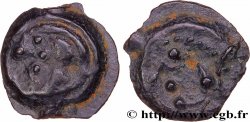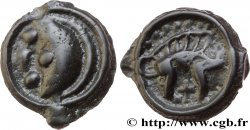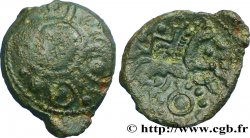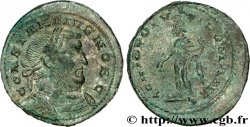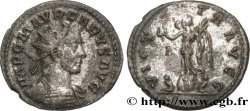bga_704608 - GALLIEN - AULERCI EBUROVICES (Region die Évreux) Hémistatère au loup
Nicht verfügbar.
Artikel auf unserem Online-Shop verkauft (2021)
Preis : 1 250.00 €
Artikel auf unserem Online-Shop verkauft (2021)
Preis : 1 250.00 €
Type : Hémistatère au loup
Datum: c. 120-60 AC.
Name der Münzstätte / Stadt : Évreux (27)
Metall : Gold
Durchmesser : 16 mm
Stempelstellung : 11 h.
Gewicht : 3,71 g.
Seltenheitsgrad : R3
Kommentare zum Erhaltungszustand:
Monnaie bien centrée, avec un joli revers bien détaillé
N° im Nachschlagewerk :
Vorderseite
Titulatur der Vorderseite ANÉPIGRAPHE.
Beschreibung Vorderseite Tête laurée d’Apollon à droite, les cheveux entrelacés, une mèche tombant sur le front.
Rückseite
Titulatur der Rückseite ANÉPIGRAPHE.
Beschreibung Rückseite Cheval stylisé galopant à droite ; au-dessus du cheval, un personnage nu, tenant un fouet d’une main et de l’autre les rênes qui passent devant la tête du cheval ; sous le cheval, un loup ; les restes d'un vexillum devant le poitrail ; entre le poitrail du cheval et le loup, un motif en forme de foudre.
Kommentare
Les monnaies de ce types présentent une très belle iconographie, tant dans la chevelure du droit que dans la composition du revers avec le cheval, le loup et le pseudo-aurige.
Cet exemplaire est un peu léger. Celui trouvé au Vieil-Évreux au XIXe siècle et aujourd’hui perdu aurait pesé 4,54 g (Sch/E. 168). Sur les deux exemplaires du Nouvel Atlas, le premier provient de la BN (n° 7170) alors que le second provient d’une collection privée.
Coins of this type have very beautiful iconography, both in the hair on the obverse and in the composition of the reverse with the horse, the wolf and the pseudo-charioteer. This example is a little light. The one found at Vieil-Évreux in the 19th century and now lost would have weighed 4.54 g (Sch/E. 168). Of the two examples in the New Atlas, the first comes from the National Library (No. 7170) while the second comes from a private collection.
Cet exemplaire est un peu léger. Celui trouvé au Vieil-Évreux au XIXe siècle et aujourd’hui perdu aurait pesé 4,54 g (Sch/E. 168). Sur les deux exemplaires du Nouvel Atlas, le premier provient de la BN (n° 7170) alors que le second provient d’une collection privée.
Coins of this type have very beautiful iconography, both in the hair on the obverse and in the composition of the reverse with the horse, the wolf and the pseudo-charioteer. This example is a little light. The one found at Vieil-Évreux in the 19th century and now lost would have weighed 4.54 g (Sch/E. 168). Of the two examples in the New Atlas, the first comes from the National Library (No. 7170) while the second comes from a private collection.







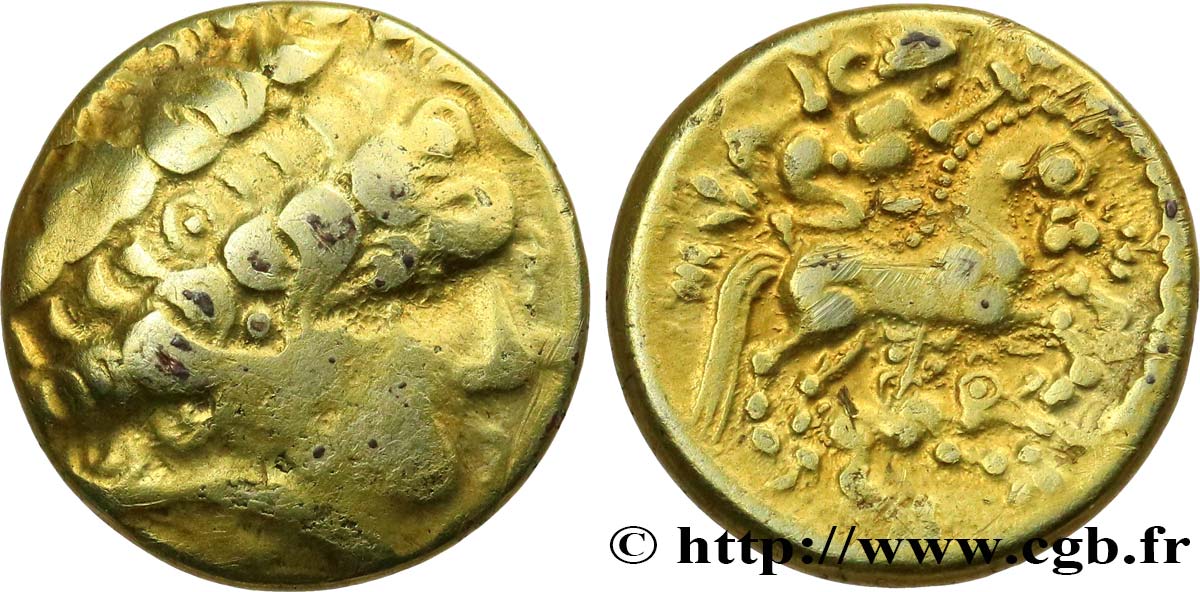
 Berichten über einen Fehler
Berichten über einen Fehler Die Seite drucken
Die Seite drucken Teilen meiner Auswahl
Teilen meiner Auswahl Stellen Sie eine Frage
Stellen Sie eine Frage Einlieferung/Verkauf
Einlieferung/Verkauf
 Details
Details